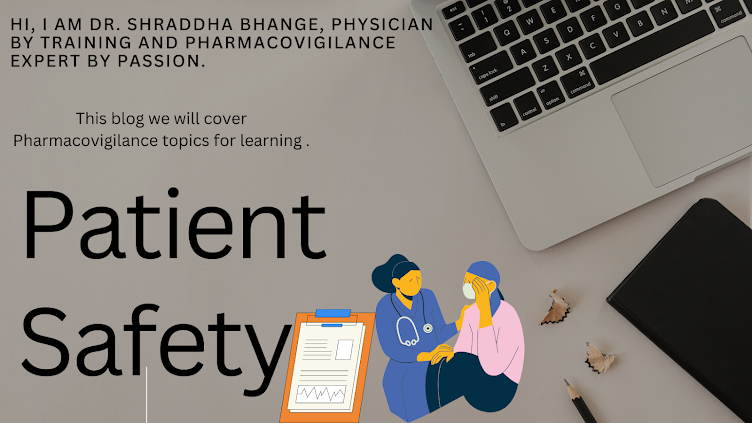Audits and Inspections in Pharmacovigilance
Audits or Inspections word can catch anyone off guard, but at the same time its a huge learning opportunity for us to find deficiencies/gaps in process and how we handle our routine operations.
Being part of audit and inspections in the past, but also recognizing that I am not yet expert on this or far from expertise, I just figured learning by sharing would be a good revision to be audit/inspection ready.
What are some basic readiness actions we can take from operations team (meaning the team that is actually handling pharmacovigilance on daily basis) and excluding the Quality Assurance (QA) team who is actually the owner/leader on audits/inspections.
There is depth of information on type of audits, inspections, how to prepare for them , corrective action, inspection report etc, but I will focus only on actual easy and simple topics that are expected from any PV operations team member. Obviously, QA team and higher leadership roles in PV will have to know more than described herein.
To give an example and put things in perspective, MHRA (Medicines & Healthcare products Regulatory Agency) conducted 22 inspections in 1 year between April 2017 and March 2018, which took tremendous amount of time, money and resources of both, pharma companies and MHRA. During these inspections, MHRA identified 89 major findings in risk management plans, noncompliance in quality systems, analysis of safety data, and management of adverse drug reactions.
1) Document readiness :
All the document pertaining to processing of adverse drug reaction reports like receipt of the reports by fax, mail, hard copies or soft copies received via website, call center, sites, consumers/patients etc should be appropriately archived as per internal SOP (in line with HA requirements) and be available to be reproduced if requested by auditor or inspector.
If there is involvement of other vendor such as CRO (contract research organization) or any other company to whom part of or all of PV is outsourced then both MAH (marketing authorization holder/pharma company) a SDEA and additional document as needed on data archival should be clearly mentioned. Adverse drug reaction reports (SAE forms/ email form patient) etc are the most critical document as they contain personal information of patient protected udner various country specific laws and regulations, hence there storage and archival should be very clearly defined and followed.
All the other documents e.g. not limited to investigators brochure, CCDS, protocol, SmPC, labelling documents, DSUR,PBRER, clinical study reports etc should also be defined regarding there availability (common share file location -access restricted) and who is responsible for ensuring most recent versions are available to the team for reference and the update process should be defined.
The SOP should clear enough to address who, what , how and when at company level so the process are robust. More details on this can be found on GVP Module I. All the team members processing the adverse events and handling PV should have training compliance and training matrix to showcase the SOP are followed.
2) Process consistency:
Process should be standardized to ensure all team members have clear defined role and responsibilities to handle data. e.g. The adverse drug reports received from reporter, consumer, investigators etc may not be completely consistent or documented, there has to be audit/inspection readiness document to prove that there are document to help in identifying and making this reports more coherent for PV practices. Hence how to to do follow up for missing information for adverse events, and what type of questions are critical for should be part of process.
3) PV professionals:
There has to be clear documentation on handling of PV functions per requirements by local and National HA eligibility rules. The CV , JD (Job description), training records, training matrix should be clearly documented and regularly updates per requirement. Whenever required, only read and understood document may not be enough, but quiz or exam to ensure understanding should be implemented.
Many health authorities need medically qualified persons to handle PV functions of casualty assessment and medical narrative of adverse drug reaction reports. This has to be documented and also the training and required qualification to be updated.
4) PV practices:
There has to be clear documentation on each and every process. For e.g. mail communication with reporters, investigators patients, consumers to reproduce CRO/MAH attempt to have complete medical documentation of all adverse drug reactions (ADR) reports. All calls, e-mails etc between any PV professional at CRO or MAH also documented to make sure each ADR/PV follow up attempts are tracked correctly.
The PV practices should also have assessment check points, if the process is effective and is being followed or not. Regular assessment of each SOP and process described in it should be planned and carried out.
5) PV function readiness:
Any request or actions from health or regulatory authorities in form of requests, questions, query, audit finding should be actioned and discussed across all PV team . Any action or root cause that is found to be due to other department should be communicated as such to them. Pharmacovigilance department should always be audit/Inspection ready, as it is department that concerns safety of patient and any finding or gap will impact all other departments and patients safety.
6) PV Database:
Knowledge on technical details on database used by MAH/CRO should be across PV team, and any data privacy measures, threats etc discussed and documented properly to ensure there are measures to avoid patient data leak etc. Appropraite team such as IT, Database vendors have to be involved to address this.
Thanks,
Dr.shraddha
Follow me at:
Volunteering for NGO-Do your bit for rural Education cause with this NGO
Linkedin-Linkedin connect
References:
2. https://www.gov.uk/government/organisations/medicines-and-healthcare-products-regulatory-agency
5. https://www.gmp-compliance.org/gmp-news/pharmacovigilance-inspection-metrics

